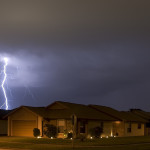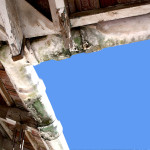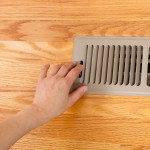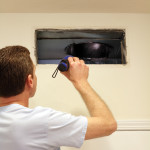Winter Weather: Keeping Moisture Out of Your Home
 Before a Storm . . .
Before a Storm . . .
There is no inherent issue with the patter of rainfall that should alarm a homeowner. A well-maintained home will keep you comfy, warm and dry during a rainstorm. But regular upkeep is sometimes needed to combat normal wear and tear. But unfortunately, cost-effective maintenance on many homes is overlooked, resulting in more expensive repairs later on.
Proper drainage is essential for guiding water away from a home’s foundation and is often key to preventing costly home repairs. When a foundation water can build up behind the foundation wall. Over time, the pressure can force a foundation to crack and/or buckle a retaining wall.
Rain Gutters
Many drainage issues are due to clogged or leaky rain gutters. A gutter need to be angled, or pitched, in the direction of the downspout for water to flow through it properly. If your gutters are angled appropriately, there should be no standing water after a heavy rain. But if water is present, you can realign a gutter by bending the hanger or rehanging it. If water still pools after adjustments, use a gutter extension to move the run off away from the foundation.
Rain gutters should be cleaned twice a year. Start by clearing any blockage, but also look for indicators — holes, rust, leaks, dents — that your gutters may not be working properly. If a problem is identified, take action before the next rainfall.
The Roof’s Fascia and Soffit
A roof’s fascia, the vertical edge that connects to the gutter, can be damaged by excess water caused by a blocked gutter. The fascia’s role is to protect the roof and home’s interior by preventing watering from entering it. Excess water can also damage the soffit, the exposed surface beneath a roof’s overhang. Importantly, small holes in the soffit help to ventilate the attic, drawing heat and moisture away from the home’s interior. In other words, a damaged soffit can cause moisture problems on the interior of a home.
Here are some rain-related maintenance ideas for keeping a healthy home:
- Monitor drainage. Make sure downspouts from rain gutters are several feet away from the foundation and check for standing water.
- Inspect Grading. A home should be graded so water slopes away from the foundation. Drains should be at a lower elevation or empty into a gravel-filled catch basin.
- Reposition Gutters and Extend Downspouts. If water puddles near the house, a downspout maybe out of alignment. Increasing the grade of the gutter can eliminate standing water and prevent water damage to a foundation or basement.

 The Hidden Secrets of Ducts
The Hidden Secrets of Ducts